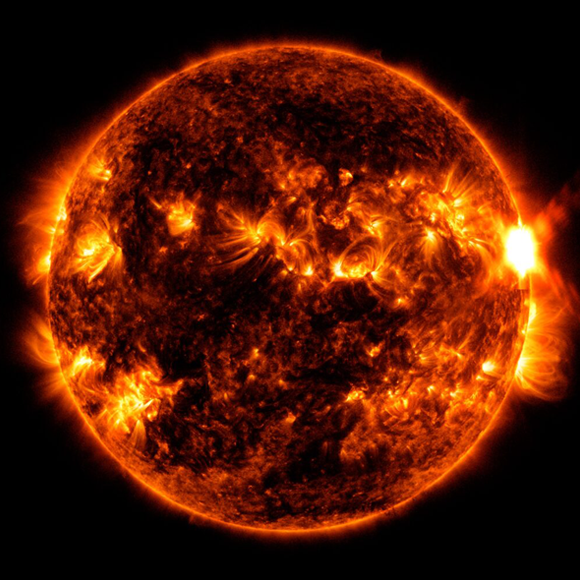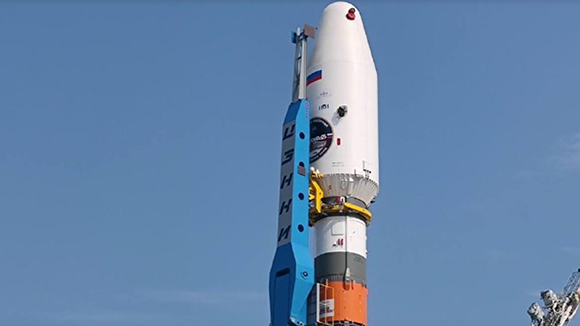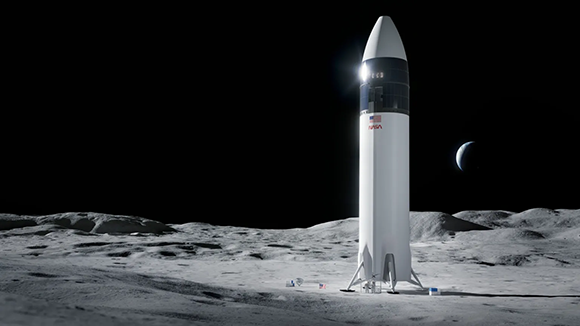Getting your Trinity Audio player ready...
Strong solar storms
Intense solar storms and eruptions caused disruptions in radio communication and satellite navigation systems across the western hemisphere in the past week. Two well-documented eruptions, at the beginning and end of the week, registered at level X, the most potent classification for solar eruptions, unleashed a sudden burst of radiation from the dark areas of the sun's surface, known as "sunspots".
Read more:
When this radiation reaches Earth's ionosphere, a region within the upper atmospheric layers, it ionizes gas particles. This activity causes disturbances in satellite communication, including signals transmitted to navigation satellites.
3 View gallery


A solar eruption photographed on August 5, appearing as a glowing spot on the right side of the image
(Photo: NASA/SDO)
Solar weather experts anticipate that these powerful eruptions, accompanied by dozens of weaker ones, may lead to a sudden and forceful release of charged particles from the sun's corona, an event known as a Corona Mass Ejection (CME). CMEs can cause changes in Earth's magnetic field, and in extreme cases, might not only disrupt communication with satellites and spacecraft but also interfere with their operations and even result in power outages on Earth due to damage to high-voltage lines.
If such a mass ejection did occur this week, it narrowly avoided hitting Earth. However, solar activity is expected to intensify in the coming months, with next year anticipated as a peak period in the sun's activity, which strengthens and weakens in cycles of 11 years. There is also a bright side to this alarming forecast: The sun's turbulent activity, especially geomagnetic storms induced by CMEs, creates the phenomenon of auroras – the mesmerizing light show produced when charged particles meet with the atmosphere. Strong storms can cause such phenomena even relatively far from the poles, so if power outages leave us in the dark and without communication, perhaps we can at least enjoy a dazzling display of lights in the sky.
Russia returns to the Moon
On Friday morning, Russia launched the Luna-25 spacecraft, marking its first attempt to land a spacecraft on the moon since 1976. This mission comes 47 years after the Soviet Union's Luna-24, an unmanned spacecraft that successfully brought back about 170 grams of moon dust.
3 View gallery


The Luna-25 spacecraft poised on the launch pad at Russia’s new space base, Vostochny, situated in eastern Siberia
(Photo: Roscosmos)
Luna-24, to some extent, was a symbol of the Soviet Union's trailing position in the moon race. Failing to match the successes of the Apollo program, the Russians did not succeed in landing humans on the moon, and the soil samples brought back by the spacecraft and its predecessors were tiny compared to the hundreds of kilograms of moon rocks collected by the Apollo program astronauts. Now, Russia may seize a victory in a new race to the moon by being the first to land a spacecraft near the lunar south pole.
Russia’s key competitor in this race is India, which launched the unmanned Chandrayaan-3 spacecraft last month. Though smaller than the Russian craft and following a longer trajectory, which is somewhat similar to the one taken by the Israeli spacecraft Beresheet, the Indian spacecraft successfully performed the entry burn into lunar orbit last week.
It is scheduled to land on August 23. In contrast, the nearly two-ton Russian spacecraft will take a direct route to the moon and is expected to reach it in just five days. After entering its orbit, it will take another 5-7 days before attempting the landing, and thus it could still beat the Indian spacecraft to the task. Russia made it clear that there's no danger of a collision between the two spacecraft, as their respective landing sites are distant from each other.
Both countries, as well as other nations and private companies, are targeting the lunar south pole due to the prevailing assumption, which is based on scientific research, that frozen water deposits exist on or near the surface in some of the craters in the area of the moon. This hypothetical water resource holds potential, not only for consumption purposes, but for purposes such as oxygen production, essential for sustaining human presence. Moreover, the components of water - oxygen and hydrogen - can serve as rocket fuel for spacecraft departing from the lunar surface.
The next small step of the US at risk?
The U.S. space agency, NASA, may change the nature of the Artemis 3 mission, currently intended to be the first manned landing on the moon since 1972, if there are significant delays in implementing key elements of the program. At a briefing at Kennedy Space Center in Florida this week, James Free, NASA associate administrator for exploration systems development and head of the Artemis mission stated, “We may end up flying a different mission if that’s the case. If we have these big slips out, we’ve looked at if we can do other missions.”
3 View gallery


A representation of SpaceX's Starship spacecraft in the landing vehicle configuration for the Artemis program on the moon
(Simulation: SpaceX)
As early as two months ago, Free voiced concerns about delays in the development of SpaceX's Starship spacecraft, chosen to serve as the lunar lander for the Artemis program's maiden crewed voyages. He hinted then that the targeted launch date of late 2025 could be deferred to 2026 due to issues. In its inaugural test flight in April of this year, Starship encountered a setback as it failed to separate from the launch vehicle and subsequently did not reach space. The timing for SpaceX's next test flight remains uncertain, although the company recently completed successful engine trials for the Super Heavy launch vehicle, designed to propel Starship into space during the upcoming trial.
“My concern is the same because they haven’t launched [Starship],” said Free after inspecting SpaceX's South Texas launch facility. He even hinted that Artemis 3 may include only a manned flight around the moon, similar to Artemis 2, currently slated for late 2024. “Artemis 3 could also change based on the outcome of Artemis 2,” Free added.

